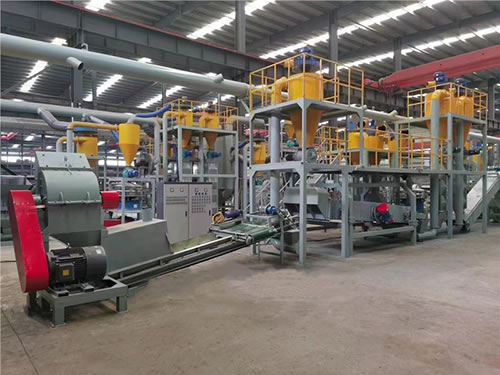Application of Lithium Battery Crushing and Recycling Technology using Limestone Material in Vietnam

Abstract:
The escalating demand for lithium batteries, primarily driven by the rapid growth of the electronics industry and electric vehicles, has necessitated the development of sustainable recycling methods to address environmental concerns and resource scarcity. This paper focuses on a novel technology for crushing and recycling lithium batteries using limestone raw materials in Vietnam, a country rich in limestone deposits but lacking advanced battery recycling facilities.
Introduction:
Vietnam's burgeoning economy is marked by increased consumption of electronic devices, leading to a surge in spent lithium batteries. The current practice of landfilling or inadequate recycling poses significant environmental risks due to the presence of toxic metals and chemicals in these batteries. To mitigate these issues, local researchers have turned to limestone, an abundant and inexpensive material, as a potential solution for battery recycling.
Crushing Process:
The first step in the recycling process involves the physical crushing of spent lithium batteries. Traditionally, this process can generate harmful dust and particles. However, the use of limestone as an additive during crushing serves a dual purpose: it reduces the risk of fire and explosion by absorbing heat and dampens the release of fine particulate matter, thereby minimizing airborne pollution.
Chemical Treatment:
Following crushing, the battery components are treated with a limestone-based slurry. This alkaline medium helps to neutralize acidic substances and facilitates the separation of valuable metals such as lithium, cobalt, and nickel from other materials. The limestone slurry not only enhances metal recovery rates but also ensures that hazardous substances are safely contained.

Recovery and Refining:
After the chemical treatment, the extracted metals undergo a refining process to obtain high-purity compounds suitable for new battery production. The limestone residue left after metal extraction can be used in construction materials or as a soil amendment, creating a circular economy model where waste products are repurposed.
Environmental Impact:
This innovative use of limestone significantly reduces the environmental footprint of lithium battery recycling. By leveraging a locally sourced material, transportation emissions are minimized, and the reliance on more energy-intensive and potentially harmful chemical processes is decreased.
Economic Considerations:
The implementation of this technology in Vietnam could stimulate local economies by creating jobs in both the collection and processing of spent batteries. Additionally, reducing the need for imported raw materials for battery production could lead to cost savings and promote self-sufficiency in the manufacturing sector.
Conclusion:
The application of limestone raw materials in lithium battery crushing and recycling technology presents a promising solution for Vietnam's growing e-waste problem. This approach offers environmental benefits, economic opportunities, and contributes to the global effort in promoting sustainable practices within the battery industry. Further research and investment into scaling up this technology could pave the way for cleaner, more efficient battery recycling processes worldwide.